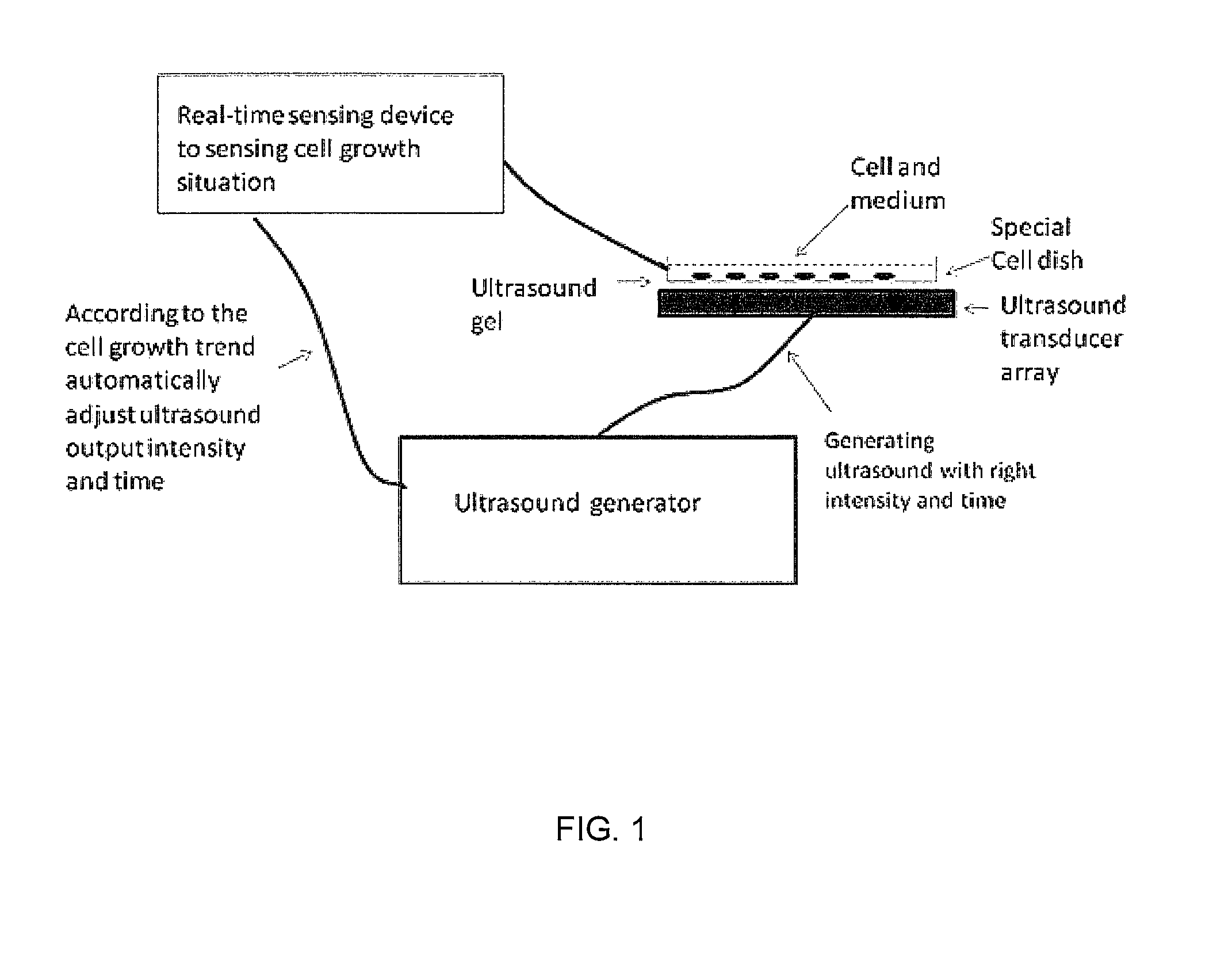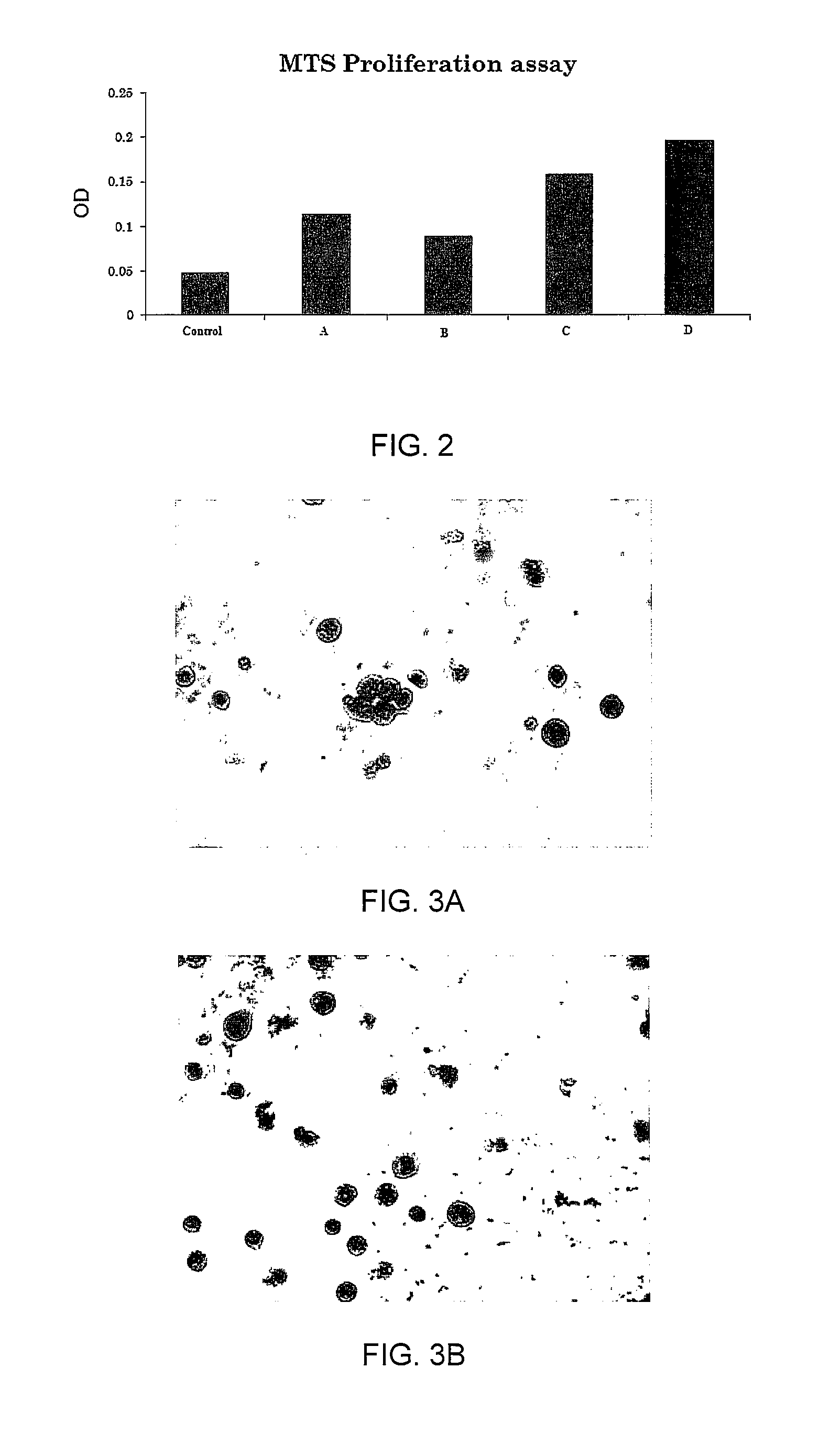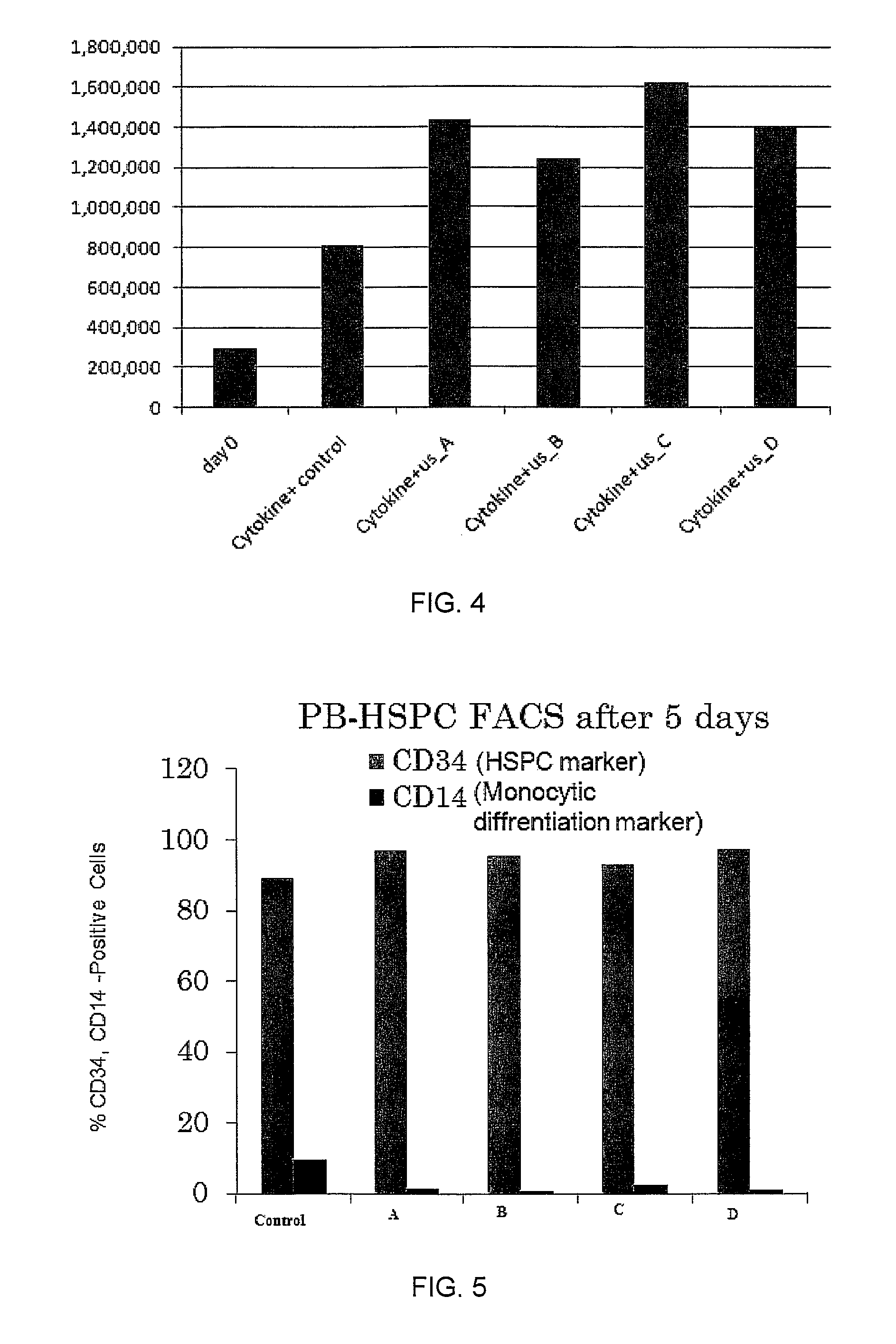Enhanced animal cell growth using ultrasound
a technology ultrasound, which is applied in the field of enhanced animal cell growth using ultrasound, can solve the problems of unspecialized stem cells, long trial and error of scientists to derive and maintain stem cells in the laboratory without, and more complex proteins that are glycosylated (carbohydrate-modified) currently must be made in animal cells, so as to enhance the rate of cell growth or monoclonal antibody production, reducing the temperature increase of the environment, and reducing the effect o
- Summary
- Abstract
- Description
- Claims
- Application Information
AI Technical Summary
Benefits of technology
Problems solved by technology
Method used
Image
Examples
example 1
Isolation of CD34+ Hematopoietic Stem / Progenitor Cells (HSPC)
[0081]Fresh and cryopreserved peripheral blood leukapheresis product (LP) were obtained from non-Hodgkin's lymphoma patients mobilized with granulocyte colony-stimulating factor, with the patients' informed consent (in accordance with the institutional guidelines approved by the Human Research Ethics Board of the University of Alberta). Cord blood (CB) was collected immediately after delivery in a sterilized tube containing heparin (1000 IU / mL), with the informed consent of the mother (in accordance with the institutional guidelines approved by the Health Research Ethics Board of the University of Alberta and the Genesis Bank, LLC, Indianapolis, USA).
[0082]LP was used to isolate CD34+ HSPC using immunomagnetic beads according to the manufacturer's instructions (Miltenyi-Biotec, Auburn, Calif.). Light-density mononuclear cells (MNC) from CB and LP were obtained by Percoll™ density gradient centrifugation (GE Healthcare, Que...
example 2
Stimulation with Low-Intensity Pulsed Ultrasound (LIPUS)
[0083]All cells were maintained in Iscove's modified Dulbecco's medium (IMDM, GibcoBRL, Long Island, N.Y., USA) supplemented with 20% bovine growth serum (BGS, Hyclone, Logan, Utah, USA) with or without a cocktail of cytokines which act on early stages of hematopoiesis including stem cell factor (SCF, 100 μg / ml), thrombopoietin (TPO, 50 μg / ml), Flt3-ligand (Flt3-L, 50 μg / ml) (Peprotech Inc., Rocky Hill, N.J., USA).
[0084]To stimulate the cultured cells with LIPUS, a device producing a 1.5-MHz ultrasound wave, 20% duty cycle, with adjustable output intensity between 30 mW / cm2 to 100 mW / cm2 was used. Four ultrasound transducers were fitted on a plastic frame and connected to the control panel of the signal generator via four independent cables. The cells (3×105) were seeded in 12-well, plates for all experiments (Gul-Uludag et al., 2010). The operation of the transducers was checked before each experiment. The plates were placed o...
example 3
Cell Proliferation and Viability
[0085]Cell proliferation and viability were assessed at day 5 by direct cell counting using a hemocytometer with trypan blue exclusion to assay for cell viability and by 3-(4,5-dimethylthiazol-2-yl)-5-(3-carboxymethoxhenyl)-2-(4sulfophenyl)-2H-tetrazolium (MTS) assay for proliferation (CellTiter 96™ AQueous One Solution, Promega, Madison, Wis.). Briefly, 3×105 cells per well were stimulated by LIPUS in combination with the cytokine cocktail for four days. For trypan blue exclusion assay, cells were resuspended in culture medium and were stained by addition of an equal volume of 0.4% trypan blue (Sigma, St. Louis, Mo.) in PBS and counted using a Neubauer haemocytometer.
[0086]To perform the MTS assay, CellTiter 96™ AQueous One Solution (20 μl 100 μl medium) was added into each well, and cells were incubated at 37° C. for 1 to 4 hours. The quantity of formazan product as measured by the absorbance at 490 nm is directly proportional to the number of livin...
PUM
| Property | Measurement | Unit |
|---|---|---|
| frequency | aaaaa | aaaaa |
| frequency | aaaaa | aaaaa |
| frequency | aaaaa | aaaaa |
Abstract
Description
Claims
Application Information
 Login to View More
Login to View More - R&D
- Intellectual Property
- Life Sciences
- Materials
- Tech Scout
- Unparalleled Data Quality
- Higher Quality Content
- 60% Fewer Hallucinations
Browse by: Latest US Patents, China's latest patents, Technical Efficacy Thesaurus, Application Domain, Technology Topic, Popular Technical Reports.
© 2025 PatSnap. All rights reserved.Legal|Privacy policy|Modern Slavery Act Transparency Statement|Sitemap|About US| Contact US: help@patsnap.com



